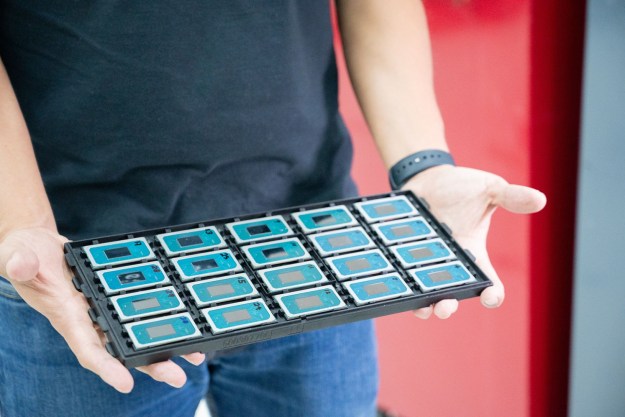Intel Corporation provided its first public demonstration of forthcoming microprocessors at its Intel Developer Forum currently underway in San Francisco, unveiling new chips codenamed Merom, Conroe, and Woodcrest aimed at notebook, desktop, and server products, respectively. Intel CEO Paul Otellini predicted the company’s forthcoming microprocessor products will deliver a "power of ten" breakthrough to a variety of products by reducing energy consumption tenfold or by bringing ten times the performance to existing products.
The 64-bit Merom, Conroe, and Woodcrest designs, to be available in the second half of 2006, are all based on Intel’s 65-nanometer manufacturing process and combine elements of the company’s power-hungry NetBurst architecture with the power-saving techniques developed for the Centrino and Pentium M processor lines. The Merom and Conroe processors—demonstrated running 64-bit Windows XP and Fedora Linux, respectively—are dual core processors, with Conroe showing the most power savings. Otellini also demonstrated a DP-configured Windows Server 2003 system with dual-core Woodcrest processors.
Otellini also said reduction in power consumption for processors will enable a new class of devices he dubbed "handtop PCs" requiring half a watt or less of processing power, weighing less than a pound, and offering battery lives up to a full day, but which are capable of running full-blown PC operating systems rather than operating systems scaled back to processing confines of handheld devices. Otellini also said Intel has over 10 processor projects in development which use four or more processor cores per chip.
Editors' Recommendations
- Some Intel CPUs lost 9% of their performance almost overnight
- Intel’s new CPU feature boosted my performance by 26% — but it still needs work
- Intel may have a monster new CPU coming soon
- AMD’s new CPUs let you play Cyberpunk without a graphics card
- Intel may be ready to launch a new monster CPU


